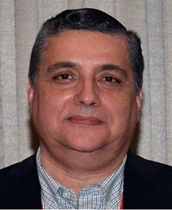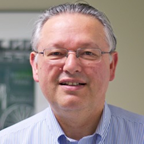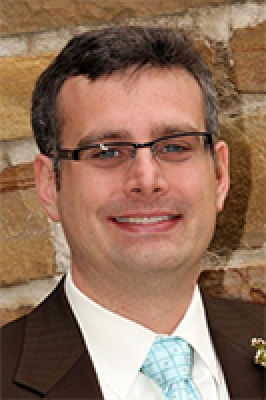___________________________________
Igor Alvarado, National Instruments, Austin, Texas USA
Talk Title: Testing and Calibration of IoT Devices for Maximum Energy Efficiency
Abstract: Most Internet of Things (IoT) devices are not designed to be energy efficient out of the box. Such factors as the protocol used by the device, its location (inside a building, in a tunnel, in the battlefield, etc.), environmental and operational conditions, and others can directly affect its performance. Proper configuration, calibration and testing is required to achieve maximum energy efficiency with respect to a minimum baseline. A large network with many connected IoT devices using multiple communications channels and connectivity options (e.g., Bluetooth, WiFi, NB-IoT, LTE-M, eMTC, etc.) and base stations would require multiple test scenarios and procedures to validate its optimal operation. The use of the 3GPP narrowband IoT (NB-IoT) which can reach 200 Kbits/s or eMTC (enhanced machine-type communication which can reach 1 Mbit/s) require key physical layer measurements of the uplink signals such as error vector magnitude (EVM), adjacent channel leakage ratio (ACLR), spectrum emission mask (SEM); calibrated signal power, precision frequency and signal quality measurements are performed. In the case of eMTC, different waveform features such as frequency hopping and guard symbols are tested. In this presentation we review different test cases and procedures that can be used to maximize the energy efficiency of a IoT devices and base stations, and how the use of model based design techniques and AI/ML can help to improve its overall performance.
Biography: Igor Alvarado is the R&D and National Laboratories Account Manager at National Instruments
(www.ni.com) where he helps to develop collaborations and strategic partnerships for technology translation with National Laboratories, not-for-profit R&D Centers and leading Research Universities in the U.S. in such areas as Cyber-Physical Systems, Smart Energy Systems, Medical Imaging/Devices and RF/Wireless Communications and Networking to improve engineering education, advance scientific research and accelerate innovation with support from NSF, DoD, DoE, NIH and other funding agencies. Mr. Alvarado holds A.S. and B.S. degrees in Mechanical Engineering from Kansas State University and has been with NI since 1999. He is an NSF Innovation-Corps mentor and has more than 30 years of practical experience in successfully developing and growing markets for high-technology products and services in the U.S. and Latin America. He has led the design, development, and deployment of real-time, measurement and intelligent control systems that involve advanced numerical methods and algorithms using high-performance embedded computing platforms. He is an active member of the IEEE, SIAM, ISA, APS, ASME, AAAS, AFCEA and AOC. Mr. Alvarado has published several technical papers and has taught courses to engineers and scientists on instrumentation, control and automation applications in industry and academia; he has also been an invited keynote speaker at leading at national/international meetings and has served as a consultant and advisory board member for academic institutions, corporations, and research laboratories. In 2017, Mr. Alvarado received the prestigious Electrical and Computer Engineering Department Heads Association’s (ECEDHA) Industry Award for his contributions to the ECE discipline and to engineering education.
___________________________________
Bahman Badipour, Federal Communications Commission, Washington DC, USA
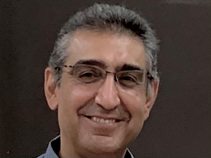 Talk Title: Spectrum for Sensors in the Age of Automation and IoT
Talk Title: Spectrum for Sensors in the Age of Automation and IoT
Abstract: In the era of self-driving cars, automation and A.I., it is expected that more and more applications may rely on the ability to sense their surrounding environment in support of their function. This presentation will discuss the current spectrum allocated to field sensors and talk about some of the newest sensor applications in different bands, their spectrum needs, and their regulatory status.
Biography: Bahman Badipour is the Chief of Technical Rules Branch at the Office of Engineering and Technology of the Federal Communications Commission. He has been the technical lead on some of the most recent FCC Report and Order including Spectrum Frontier (5G), Spectrum Horizon, C-Band, and 6 GHz. Prior to joining the FCC, Bahman was an RF Engineering consultant for several leading telecommunication companies. Between 1992 to 1999 he was an R&D engineer in the Electromagnetic Theory and Techniques Branch of the Naval Surface Warfare Center, Carderock Division. He holds a Ph.D. degree in Electrophysics from The George Washington University.
___________________________________
Nuno Borges Carvalho, University of Aveiro, Aveiro, Portugal

Talk Title: SWIPT – Simultaneous Wireless Information and Power Transmission.
Abstract: The energy needs for wireless systems limit the evolution of most IoT and future 5G solutions. This talk will present an overview of the energy requirements for IoT wireless communication systems and the challenging problems they face. The main objective is to discuss future wireless paradigms that will soon be affected by 5G and subsequent wireless generations. These include the issue of battery-less wireless devices, that combine wireless power transmission and backscatter communications. The practical approach this leads to is a concept called SWIPT – Simultaneous Wireless Information and Power Transmission.
Biography: Nuno Borges Carvalho was born in Luanda, Angola, in 1972. He received the Diploma and Doctoral degrees in electronics and telecommunications engineering from the University of Aveiro, Aveiro, Portugal, in 1995 and 2000, respectively. He is currently a Full Professor and a Senior Research Scientist with the Institute of Telecommunications, University of Aveiro. He co-authored Intermodulation in Microwave and Wireless Circuits (Artech House, 2003) and Microwave and Wireless Measurement Techniques (Cambridge University Press, 2013). He has been a reviewer and author of over 100 papers in magazines and conferences. He is associate editor of the IEEE Transactions on Microwave Theory and Techniques, IEEE Microwave Magazine and Cambridge Wireless Power Transfer Journal. He is the coinventor of four patents. His main research interests include software-defined radio front-ends, wireless power transmission, nonlinear distortion analysis in microwave/wireless circuits and systems, and measurement of nonlinear phenomena. He has recently been involved in the design of dedicated radios and systems for newly emerging wireless technologies. Dr. Borges Carvalho is the chair of the IEEE MTT-20 Technical Committee and the past-chair of the IEEE Portuguese Section and MTT-11 and also belong to the technical committees, MTT-24 and MTT-26. He is also the vice-chair of the URSI Commission A (Metrology Group). He was the recipient of the 1995University of Aveiro and the Portuguese Engineering Association Prize for the best 1995 student at the University of Aveiro, the 1998 Student Paper Competition (Third Place) of the IEEE Microwave Theory and Techniques Society (IEEE MTT-S) International Microwave Symposium (IMS), and the 2000 IEE Measurement Prize.
___________________________________
Dave Cavalcanti, Principal Engineer, Intel Corporation, Hillsboro, Oregon USA
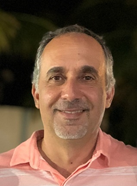
Talk Title: Advances in Edge Computing and Networking for Distributed IOT Systems
Abstract: This talk will discuss recent advances in deterministic edge computing, ultra-low latency networking, and their potential to transform design and operation distributed industrial systems through converged networks. The success of these technologies in other domains (e.g., IT, enterprise, telecommunications) has driven significant efforts to adapt them to industrial applications and systems. For instance, industrial automation systems can take advantage of real-time computing across distributed cloud/edge platforms enabled by ultra-low latency high reliable wired and wireless communications. Future autonomous mobile robots, autonomous vehicles, and immersive experiences can leverage virtualized computing for advanced learning capabilities in real-time with high reliability. This talk will provide an overview of the technologies and industry ecosystem developing around distributed computing and networking to enable future industrial systems design and operate. We will also discuss new co-design paradigms where computing and communications are co-optimized, instead of being designed in silos. The presentation will also cover advances in time-coordinated distributed computing, TSN (Time-sensitive networking), co-design and learning strategies that can enable the next generation distributed IOT systems.
Biography: Dave Cavalcanti received his PhD in computer science and engineering in 2006 from the University of Cincinnati. He is currently Principal Engineer at Intel Corporation where he develops next generation wireless connectivity and networking for Intel platforms and enable their applications in autonomous, time-sensitive systems. He leads Intel Lab’s research on Wireless Time-Sensitive Networking (TSN) and industry activities to enable determinism in future wireless technologies, including next generation Wi-Fi and beyond 5G systems. He is Senior Member of the IEEE and serves as the chair of the Wireless TSN working group in the Avnu Alliance.
___________________________________
Jeffrey Derby, Duke University and CALM Computing, Durham, NC USA
 Talk Title: “Energy Efficient Computing for Signal Processing in Communications, and for Processing in Application”
Talk Title: “Energy Efficient Computing for Signal Processing in Communications, and for Processing in Application”
Abstract: In a processor, accesses to external memory consume energy and limit performance. For many applications, for example in signal processing and machine learning, the impact of external memory accesses has an extreme impact on both performance and energy consumption. This is especially true when the processing is conducted at the edge. This talk describes a domain-agnostic processor architecture that provides a dramatic increase in computation per unit of memory bandwidth consumed; thus, work requires less energy and takes less time, and energy consumption per operation is reduced by an order of magnitude. In implementation, processor cores support a fixed-length short-vector SIMD architecture. Each core has 64KB of private local storage implemented as a register file with 2K 32B-registers that is fully visible to the architecture. The scheme supports fine-grained gather-scatter within a register file, enabling extensive rearrangement of data local to a processor core after it is fetched from external memory.
Several common application examples illustrate the gains. The first is a simple 1D FFT. This can be viewed in the context of digital baseband processing for OFDM, noting that several blocks in the processing chain can be executed while data remains in a core’s register file. We then look at examples that involve working with multidimensional arrays. We first show that the architecture can provide access to data along all dimensions of such arrays with equal efficiency if there is sufficient parallelism available in the algorithm to be used. We then look at 3D FFTs and CNNs as specific examples.
Finally, the approach, which might be called “Compute At Local Memory – CALM”, is differentiated from previous processor-in-memory attempts to address the external memory bottleneck. The solution is general, domain-agnostic, and can provide benefits to a wide variety of applications.
Biography: Dr. Jeff Derby received his Ph.D. in electrical engineering from Columbia University in 1975. He joined IBM in Research Triangle Park, NC, in 1982 after spending seven years with Bell Laboratories in Whippany, NJ. He was a Senior Technical Staff Member in the PowerPC Technology Development area in the IBM Microelectronics Division. His current work is focused on analog and digital signal processing subsystems with application to telecommunications. He is listed as an inventor or co-inventor on 22 US patents. Dr. Derby has been an adjunct faculty member at Duke since 1984.
___________________________________
Adam Drobot, Chairman, OpenTechWorks Inc., Wayne, Pennsylvania USA
Talk Title: “IoT Electromagnetic Sensor Systems and Sustainability – An Overview”
Abstract: The IoT Vertical & Topical Summit at RWW2020 brings together three subjects. They are: (1) Sustainability and what it means; (2) the world of the Internet of Things; and (3) the realm of electromagnetic sensor technologies and products. The talk provides an overview of how electromagnetic sensor technologies contribute to “sustainable” IoT solutions and how they interact with other technologies that are essential for the IoT. The talk also describes four important application areas where electromagnetic sensors provide unique capabilities. These are, Agriculture, Automotive, Space Based Remote Monitoring and Communications Systems, and Industrial Manufacturing.
Biography: Dr. Adam Drobot is an experienced technologist. His activities are strategic consulting, start-ups, and industry associations. He is the Chairman of the Board of OpenTechWorks, Inc. He also serves on the Boards of multiple early-stage companies. In the past he was the President of the Applied Research at Telcordia Technologies (Bellcore) and the company’s CTO. Before that he was the Senior Vice President for Science and Technology at SAIC/LEIDOS. In the past, he was on the Board of the Telecommunications Industry Association where he Chaired the Technology Committee.
Adam is a member of the FCC Technological Advisory Council and in recent years Co-Chaired the Working Groups on Artificial Intelligence, Computational Powers Stress on the Network, and Sunsetting the PSTN. Over the years he has been active in IEEE and served as the Chair of, multiple Committees and multiple major conferences, including the IEEE IoT Activities Board. He is currently on the Editorial Board of the IEEE Press. He has published over 150 journal articles and holds 27 patents. He is a fellow of the American Physical Society. His degrees include a BA in Engineering Physics from Cornell University and a PhD. in Plasma Physics from the University of Texas.
___________________________________
Gregory D. Durgin, Georgia Tech, Atlanta, GA USA
Talk Title: “Space-Based Wireless Ambient Power for IoT Devices in Urban Areas”
Abstract: We discuss the feasibility of powering IoT devices in an urban area with space-based RF sources that harness power from the sun, Although the most ambitious efforts in the field of space-based solar power has sought to collect the power of the sun in space and beam the energy to the terrestrial grid via microwave power, we demonstrate how a far more achievable system could be deployed to blanket enough low-level RF power across an urban area to perform the sensing, computation, and communication by low-powered motes. In fact, a space-based microwave source may be a far more promising method for providing cheap, green, safe, ubiquitous wireless power compared to terrestrial sources that waste energy and ineffectively cover a region due to loss, fading, and the point-source nature of their emissions.
Biography: Prof. Gregory D. Durgin joined the faculty of Georgia Tech’s School of Electrical and Computer Engineering in Fall 2003 where he serves as a professor. He received the BSEE (96), MSEE (98), and PhD (00) degrees from Virginia Polytechnic Institute and State University. In 2001 he was awarded the Japanese Society for the Promotion of Science (JSPS) Post-doctoral Fellowship and spent one year as a visiting researcher with Morinaga Laboratory at Osaka University. He has received best paper awards for articles coauthored in the IEEE Transactions on Communications (1998 Stephen O. Rice prize), IEEE Microwave Magazine (2014), and IEEE RFID Conference (2016, 2018, 2019) as well as the 3rd place 2020 Nokia Bell Labs Prize for “Hyper-RFID: a Revolution for The Future of RFID.” Prof. Durgin authored Space-Time Wireless Channels (2002), the first textbook in the field of space-time channel modeling which has influenced multiple generations of commercial cellular technologies. Prof. Durgin founded the Propagation Group (http://www.propagation.gatech.edu) at Georgia Tech, a research group that studies radiolocation, radio measurement, RFID-related technology, and applied electromagnetics. He is a winner of the NSF CAREER award as well as numerous teaching awards, including the Class of 1940 Howard Ector Outstanding Classroom Teacher Award at Georgia Tech (2007). He has served on the editorial staff for IEEE RFID Virtual Journal, IEEE Transactions on Wireless Communications, and IEEE Journal on RFID. He also serves as President Elect for the IEEE Council of RFID (CRFID). He served as an IEEE CRFID Distinguished Lecturer (2015-2018), IEEE CRFID VP of Conferences (2020-2021), and as general/executive chair of many IEEE conferences. His educational channel #profdurgin on YouTube instructs viewers on engineering electromagnetics and RFID-related topics, having drawn over 10,000 subscribers and nearly 1 million views. He is a frequent consultant to industry, advising numerous multinational corporations on wireless technology.
___________________________________
Sam Fuller, Flex Logix Technologies, Mountain View, California USA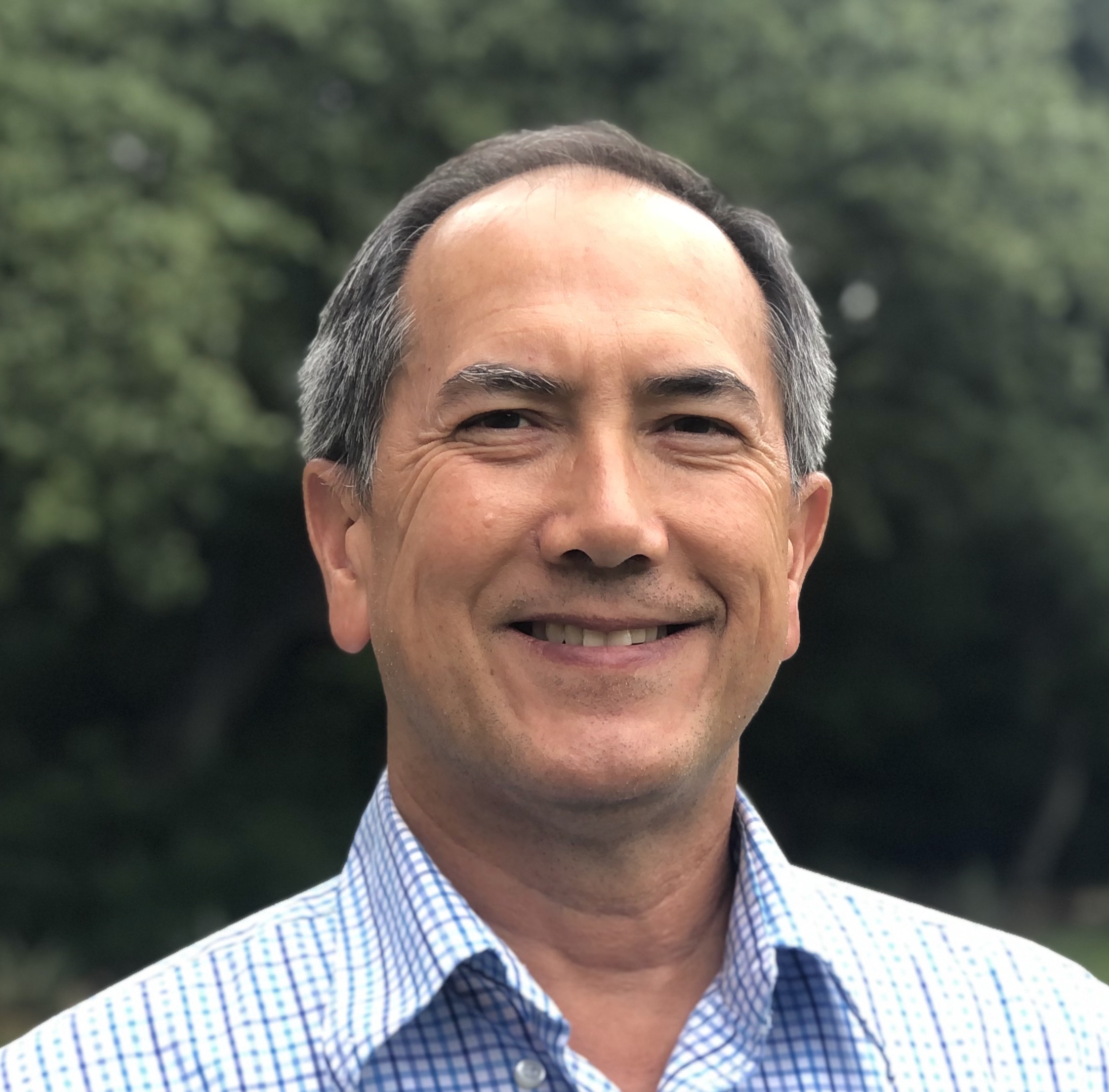
Talk Title: Machine Learning Inference Architectures – Understanding the unique processing needs of AI Inference Systems
Abstract: Machine Learning is an approach for application development that is based on training software models to recognize patterns in data, identify objects in complex data sets and produce solutions that achieve very high accuracy in tasks such as natural language understanding, language translation and machine vision. Due to the very high computational requirements of machine learning, new architectures have been developed that are much more efficient at performing the mathematics that are foundational to machine learning. This presentation will provide an overview of the performance requirements for both training and inferencing of machine learning with a focus on edge vision requirements with a look at current vision models. It will then review the various architectural approaches taken by commercial entities to solve the challenging problem of performing trillions of operations in fractions of seconds at low power for edge applications.
Biography: Sam Fuller is the Head of Inference Marketing for Flex Logix Technologies. Sam has held previous roles in engineering and product marketing/management at NXP, Freescale, Applied Micro and Motorola. Sam has worked in processing and computing from the early days of personal computing and sold PowerPC processors to companies around the world for applications ranging from PowerMac personal computers to internet routers, Wi-Fi access points and automotive gateways. Currently Sam leads product marketing for a family of Edge AI devices that provide tera operations/sec (teraops) of performance in a small form-factor with less than 5 Watts of power dissipation.
___________________________________
Sangkil Kim, Pusan National University, Busan, Republic of Korea

Talk Title: Machine Learning Approach for RFID-Based Backscattering and Indoor Direction Finding Antenna Systems
Abstract: In this talk, operation principle, architecture, and machine learning technique for wirelessly powered RFID-based backscattering and direction finding antenna system is presented. For the sensor tag-reading and power-delivering algorithm, machine learning techniques, such as support vector machine (SVM), artificial neural networks (ANN), and naive Bayes algorithm, are introduced with experimental verifications. The supervised SVM algorithm significantly improved the reading accuracy of chipless RFID sensor tags due to the superior signal classification performance of the SVM method. The ANN-based adaptive dynamic matching network for magnetic resonant wireless power transfer system improved wireless power transfer distance efficiently. In-door direction finding antenna array system using gradient descent machine learning algorithm is also discussed in this talk.
Biography: Sangkil Kim (M’10-SM’21) received his B.S. degree from School of Electrical and Electronics Engineering, Yonsei University (Magna Cum Laude), Seoul, Republic of Korea, in 2010. He received his M.S. and Ph.D. degrees from School of Electrical and Computer Engineering, Georgia Institute of Technology, GA, Atlanta, USA in 2012 and 2014, respectively. From 2015 to 2018, he worked at Qualcomm, inc., San Diego, CA, USA as a senior engineer. He joined the faculty of the Department of Electronics Engineering, Pusan National University, Busan, Republic of Korea in 2018. He has published 35 papers in peer reviewed international journals and 5 book chapters. Dr. Kim received the IET Premium Award Microwave, Antennas & Propagation in 2015 and KIEES Young Researcher Award in 2019. He participated in the commercialization of the world’s 1st 5G mmWave phased antenna array module for mobile devices. He is a member of the IEEE MTT-26 RFID, Wireless Sensors, and IoT Committee. His main research interests are mmWave phased antenna array, machine learning assisted backscattering communication, RF biosensors, energy harvesting and printed RF electronics.
___________________________________
Jens Kirchner, Friedrich-Alexander University Erlangen-Nuremberg, Erlangen, Germany
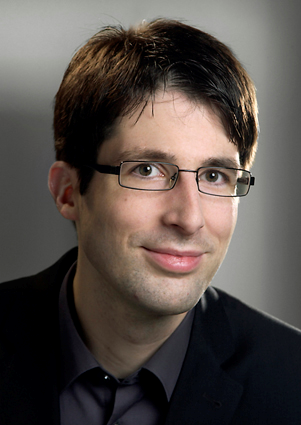
Talk Title: IoT for Healthcare: Trade-Offs Between Diagnosis and Usability
Abstract: The importance of IoT devices in healthcare technology is constantly growing, with central applications in the monitoring of chronic diseases and the detection of sporadic events of a disease. To assure appropriate data quality and coverage, a balance between the (often conflictive) demands from diagnostics and usability has to be identified. The talk will try to give an overview over approaches for that purpose, focusing on the trade-offs between diagnostic features and power consumption, the latter being a central determinant of battery lifetime and thus of data coverage and user acceptance.
Biography: Jens Kirchner received his diploma degree in physics from Friedrich-Alexander-Universität Erlangen-Nürnberg (FAU), Germany, in 2004. He received his doctorates in 2008 and 2016 from FAU in the fields of biosignal analysis and philosophy of science, respectively. Between 2008 and 2015 he worked at Biotronik SE & Co. KG in Erlangen and Berlin in the research and development of implantable cardiac sensors. He holds several patents in this field of research. In 2015, he joined the Institute for Electronics Engineering at FAU, where he heads the Medical Electronics & Multiphysics Systems group. His research interests lie in medical sensors, with a focus on implantable and wearable sensors as well as powering them by use of inductive power transfer and energy harvesting. A further research area is molecular communications with a focus on the design of experimental testbeds, including steering and detection of nanoparticles as well as optical sensors for microfluidic setups. J. Kirchner is Senior Member of the IEEE with membership in the Communications Society, the Magnetics Society, and the Engineering in Medicine and Biology Society. He is also a member of VDE and the European Microwave Association.
___________________________________
Prof. Dr. Sérgio Ivan Lopes, Assistant Professor, Polytechnic Institute of Viana do Castelo, Portugal
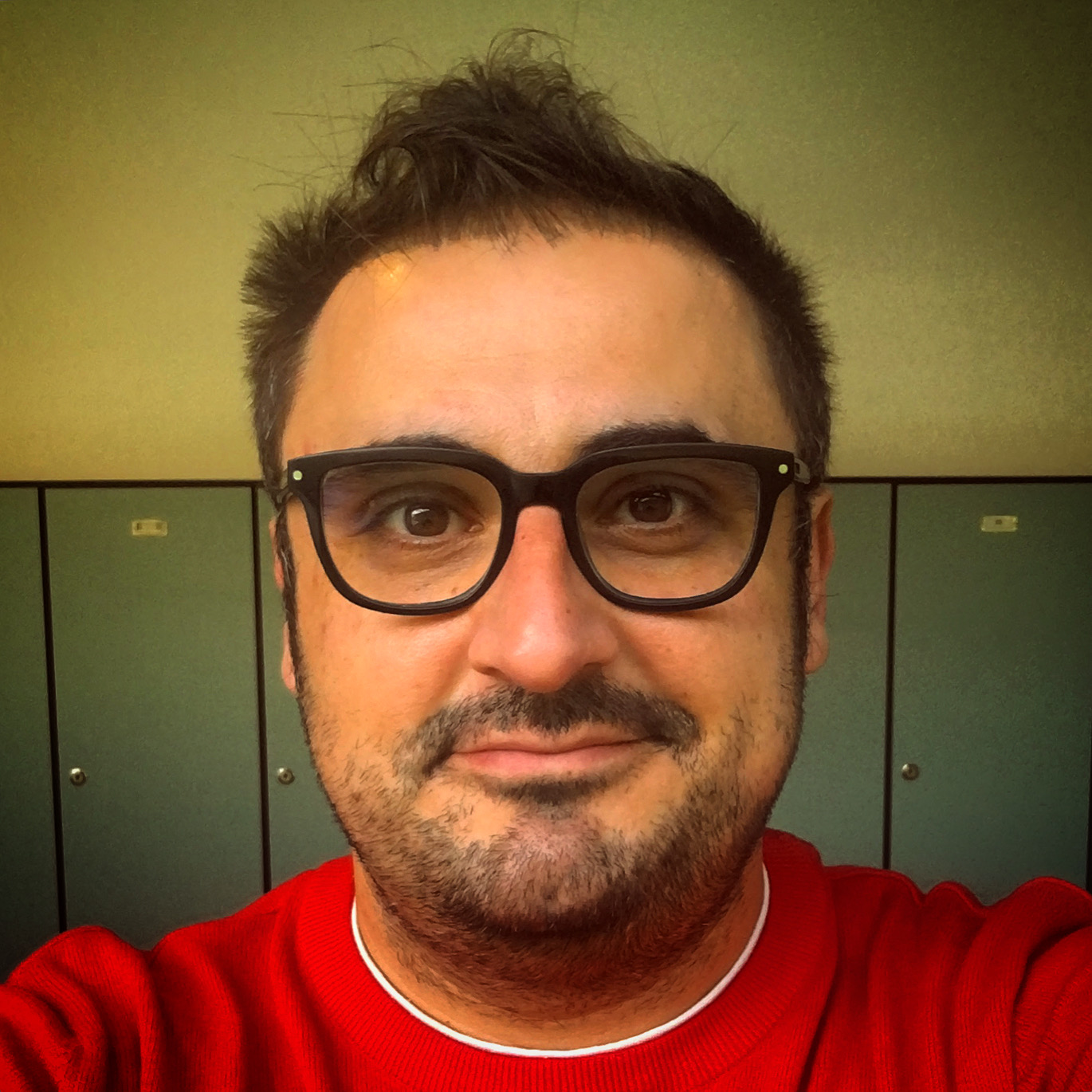
Talk Title: IoT and Digitalization as Key Technological Enablers for Achieving the UN Sustainable Development Goals
Abstract: IoT technologies have a great potential to foster digitalization and act as a driving force for achieving the UN Sustainable Development Goals (SDGs), and thus promoting not only an increased awareness among citizens but also a more sustainable citizenship, whose main stage is represented by a complex system, i.e. the city, and its sub-systems, such as industry, transportation, sewage, water, health, etc. For example, to effectively trace a specific value chain, the demand for digitalization of many operations and processes during manufacturing/logistics may result in several benefits not only for the manufacturer (waste reduction, adopt more sustainable practices, quality increase, etc.), but also for the end consumer (origin/quality certification, cost-efficiency, etc.), and thus enabling to track the usage of rare raw materials and energy consumption in the manufacturing, operating, and recycling activities. This talk will focus on hands-on experience and lessons learned during the design of IoT-driven applications within the scope of indoor air quality management, water consumption monitoring, smart healthcare, civil infrastructure monitoring, real-time bicycle tracking, among others, which can be seen as a driving force to improve citizen engagement towards three relevant UN SDGs: #3 – Good Health and Well Being, #9 Industry, Innovation and Infrastructure and #11 – Sustainable Cities and Communities.
Biography: Sérgio Ivan Lopes (S’11–M’15–SM’20) is a researcher at Instituto de Telecomunicações and Assistant Professor at the Technology and Management School of the Polytechnic Institute of Viana do Castelo, where he occupies the position of director of the undergraduate course in Networks and Computer Systems Engineering. He is graduated in Electronics and Telecommunications Engineering, M.Sc. in Biomedical Engineering, Ph.D. in Electrical Engineering (University of Aveiro, Portugal) and has a Postgraduate Diploma in Project Management (Porto Business School/University of Porto, Portugal). In 2007, he has been awarded the Texas Instruments ESPA – Excellence in Signal Processing Award, and in 2015, he has been awarded the First Prize of the Fraunhofer Portugal Challenge (Ph.D. category). Since 2005, he has been collaborating in several R&D projects and co-authored more than 80 scientific publications in international conference proceedings and international peer-reviewed journals. In 2016, he joined the Expert Panel of the European Commission, being engaged in the evaluation of the call ICT-01-2016: Smart Cyber-Physical Systems, since 2020 he occupies the position of General-Chair at the EAI Edge-IoT – International Conference on Intelligent Edge Processing in the IoT Era. In 2021, he motivated the foundation of the IEEE IPVC Student Branch, where he occupies the position of counselor. His research interests include cyber-physical systems, IIoT/IoT, embedded systems, edge computing/intelligence, digital signal processing and indoor positioning.
___________________________________
Rainer Matischek, Infineon Technologies Austria AG, Graz, Austria

Talk Title: Application Studies and Demonstrators Towards Sustainable IoT and Wireless Sensor Systems
Abstract: The rise of the Internet of Things (IoT) offers countless new opportunities by interconnecting all sorts of embedded devices and sensors. In the past decade, various technical advances in the area of wireless communication and miniaturization have been achieved and published. However, before rushing into mass deployment of such embedded sensors, additional factors such as sustainability need to be taken into account. This talk focuses on three aspects of sustainability: a) Reducing components and raw material by exploiting SoC-integration b) tailoring system-energy budgets to application and lifecycle aspects of smart sensors, and c) considering user-friendly provisioning or reconfiguration for increased service life. These topics are discussed in an overview of exemplary proof-of-concept demonstrators of funded research projects where Infineon recently has been involved.
Biography: Dr. Rainer Matischek is Principal Research Engineer at Infineon Technologies Austria AG Development Center of Graz. He joined Infineon 2004 and specialized in the area of embedded systems. During his Master Thesis 2006, he started his first research in the area of Wireless Sensor Networks and Internet of Things. Subsequently, in the scope of various related EU-funded and national research projects (eCUBES, SNOPS, CHOSeN, SmartCoDe, IoE) he focused his PhD research in the area of wireless communication and real-time protocols. Besides a few years working in the firmware product development, he finished his PhD 2011, and finally joined the research department. Since 2016, he has been an internal project leader for various funded research projects in embedded wireless and IoT security systems, recently contributing to IoSense, SemI40, DeSSnet, Comp4Drones, and ADACORSA projects.
___________________________________
Valentina Palazzi, University of Perugia, Perugia, Italy
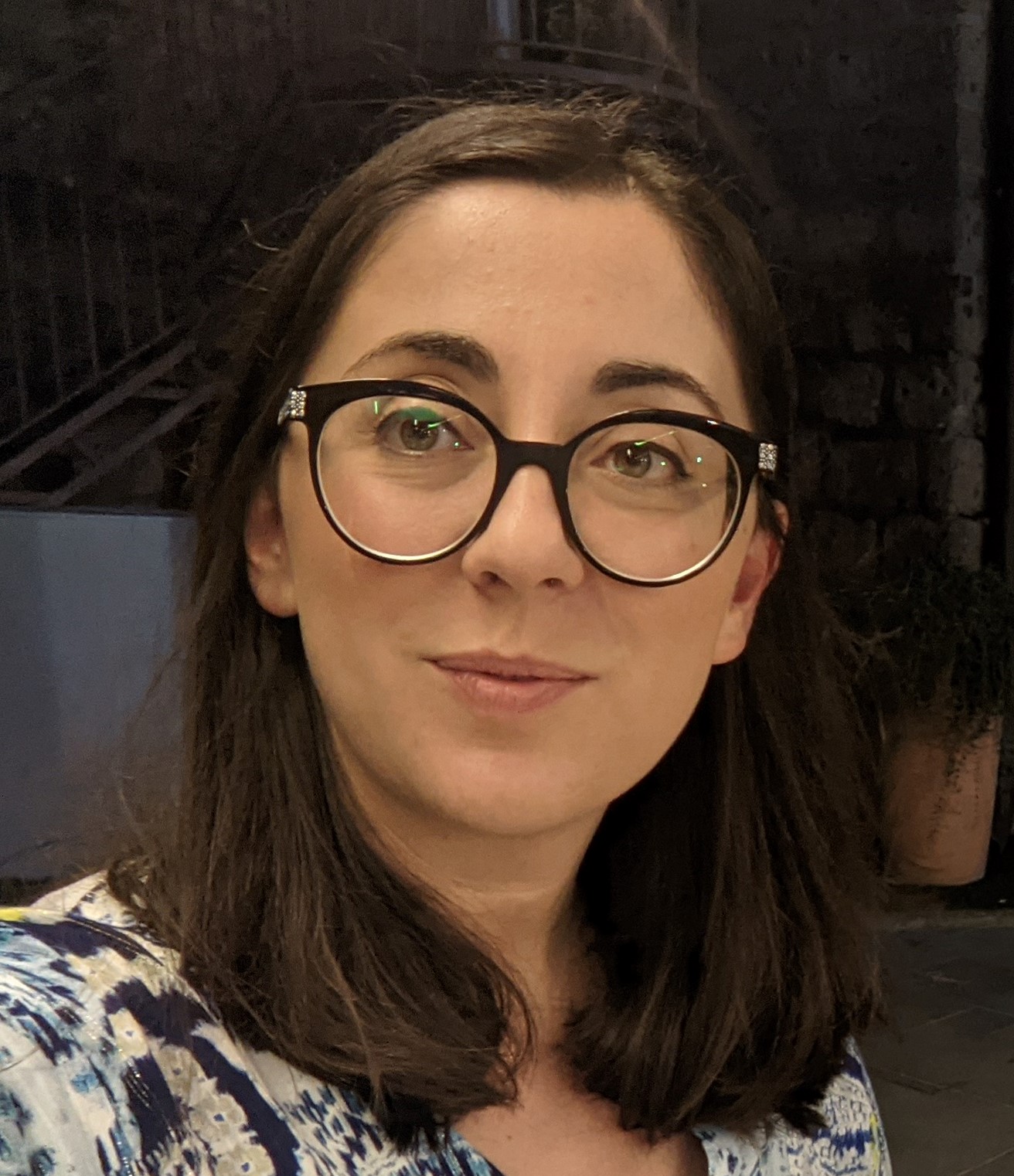
Talk Title: How to Make IoT Sensors Sustainable?
Abstract: Internet of Things systems are becoming popular in many different commercial and industrial applications, ranging from health monitoring to logistic support, predictive maintenance, and smart agriculture. The more IoT sensor nodes are pervasively distributed, the more information we have, which allows us to arrange correction procedures more promptly and precisely. However, as the number of IoT devices increases, keeping track of their position and keeping control of their status becomes more challenging. In some applications, sensors can be inaccessible or can be distributed over large areas. In these cases, the energy autonomy of the wireless nodes becomes critical, and the maintenance procedures become complex and demanding. What’s more, the sensors are more and more abandoned in the environment, which may cause pollution issues.
In this talk, we will discuss possible approaches for improving the sustainability of IoT sensors. First of all, we will describe wireless communication approaches enabling battery-less sensor nodes. In particular, we will focus on sensing solutions based on radio-frequency identification (RFID) devices and harmonic transponders. Then, we will describe materials and manufacturing procedures that reduce the footprint of electronic devices and enable innovative sensing approaches. Finally, we will show some of the most recent advances on the subject, and we will sketch out future directions.
Biography: Valentina Palazzi received the M.S. degree in electrical engineering and the Ph.D. degree in industrial and information engineering from the University of Perugia, Perugia, Italy, in 2014 and 2018, respectively. She was Visiting Ph.D. Student with the Tyndall National Institute, Cork, Ireland, in 2015, with the Centre Tecnològic de Telecomunicacions de Catalunya, Barcelona, Spain, in 2016, and with the Agile Technologies for High- Performance Electromagnetic Novel Applications Research Group, School of Electrical and Computer Engineering, Georgia Institute of Technology, Atlanta, GA, USA, in 2017. Currently, she is an associate researcher at the University of Perugia. Her research interests include the design of RF components, wireless sensors, radar front ends, wireless power transfer technologies, additive manufacturing processes, and conformal electronics.
Dr. Palazzi was a recipient of the First Place Award of the Student Design Competition on Wireless Energy Harvesting held at the 2016 IEEE MTT-S International Microwave Symposium in San Francisco, the IEEE MTT-S Graduate Fellowship in 2017, the 2017 MTT-S Prize—Italy Chapter Central and Southern Italy, the URSI Young Scientist Best Paper Award conferred at the 2019 URSI Italian National Meeting, and the URSI Young Scientist Award at GASS 2021. She is also the Vice-Chair of the IEEE Microwave Theory and Technique Society (MTT-S) Technical Committee—26 RFID, Wireless Sensor, and IoT. She has co-authored 1 patent, 1 book chapter, and more than 40 scientific papers in international journals and proceedings.
___________________________________
Olga Saukh, Graz University of Technology, Graz, Austria
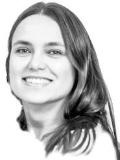
Talk Title: Mixed Signals at Large Scales: IoT Sensors for Air Quality Monitoring and Forecasting
Abstract: IoT sensors are extensively used in monitoring, detection and early warning contexts. They rely on a tight integration of sensory inputs and embedded data processing to autonomously cope with disturbances and unpredictability of the physical world. Air quality monitoring presents an interesting and challenging use-case for the IoT technology to provide sustainable and reliable measurements as well as accurate predictions. On the one hand, miniaturised chemical gas sensors require frequent recalibration, are power hungry or come with slow response times. Using these in large scale deployments is problematic due to high maintenance costs to replace batteries and reference-measure sensors’ signals. On the other hand, gathered datasets are sparse: they comprise only point measurements and require well-designed spatiotemporal prediction models to yield accurate forecasts. These forecasts are valuable for large-scale optimizations and control of local pollution sources to improve ambient air quality, in particular in urban areas.
In this talk, I will summarise my lessons learned from operating and modelling low-cost IoT sensors for air quality monitoring over the past 10 years and present recent research findings on how to make such measurement networks more sustainable, and the short-term forecasts obtained from measurement data more accurate.
Biography: Prof. Olga Saukh is an associate professor at TU Graz, Institute of Technical Informatics (ITI) and a research group leader at the Complexity Science Hub Vienna (CSH Vienna). She holds a habilitation degree in Embedded Systems from TU Graz since 2020. She did her postdoctoral training at ETH Zurich in 2010-2016 working in the group headed by Prof. Lothar Thiele in the Computer Engineering and Networks Laboratory. Following her Bachelors in Applied Mathematics from the University of Kyiv, Ukraine in 2002 and her Masters in Applied Computer Science from the University of Freiburg, Germany in 2004, she received her Ph.D. in Computer Science from the University of Bonn, Germany in 2009 under the guidance of Prof. Pedro José Marrón. She received the 2010 CONET Ph.D. Academic Award for her thesis “Efficient Algorithms for Structuring Wireless Sensor Networks”. Her research focuses on networked embedded sensing, algorithm engineering for CPS-IoT, embedded, distributed, and mobile machine learning. She is interested in both the theoretical beauty of algorithm engineering and in solving real-world challenges in environmental, health, and educational domains. She serves on program committees of international conferences. Her publications have been accepted at top conferences and journals such as IEEE/ACM IPSN and ACM ToSN. She received Best Paper awards at IEEE SECON in 2021, IEEE ICPADS in 2017, at ACM/IEEE IPSN in 2011 and in 2015, and at IEEE PerCom in 2014. She is an associate editor at ACM IMWUT and a member of ACM.
___________________________________
Klaus Schilling, University of Würzburg, Würzburg, Germany
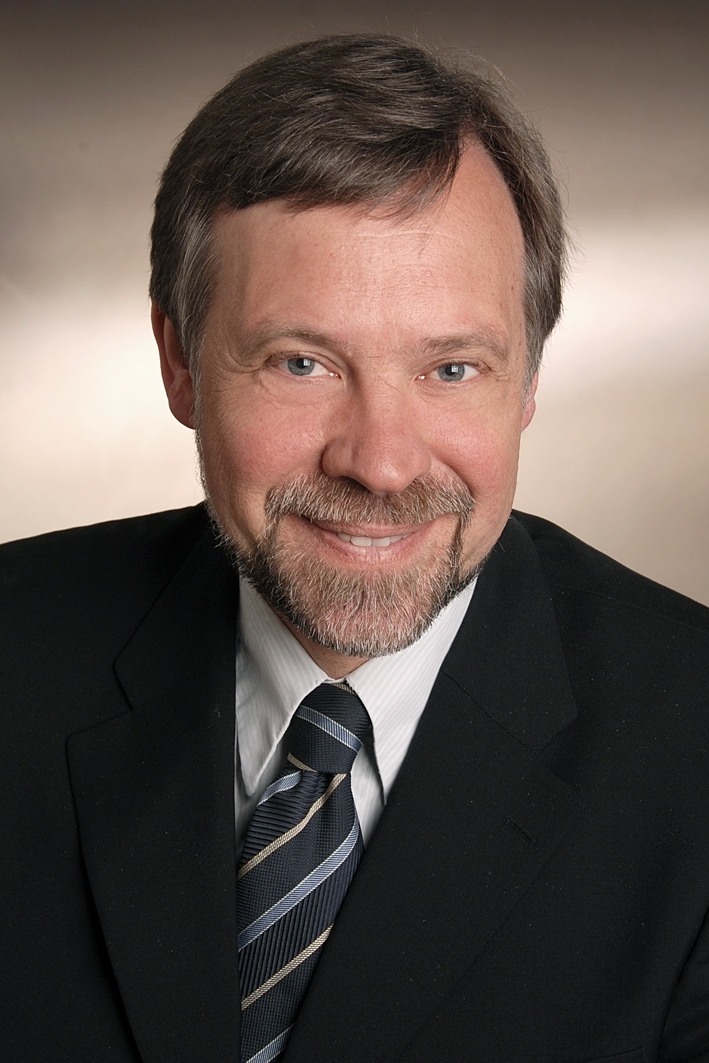
Talk Title: Perspectives in S5: Small, Smart, Self-organizing Satellite Systems for IoT
Abstract: Increasing capabilities of small satellites enable the realization of global telecommunication networks at limited costs. While on Internet of Space StarLink approaches operability, innovative future systems composed of nano-satellites of a few kilograms allow new perspectives for low latency telecommunication applications in 5G context. But also in Earth observation, new approaches based on distributed sensor networks realized with CubeSats offer interesting perspectives. This presentation will provide an overview of latest developments and will discuss related exemplary advanced CubeSat missions
Biography: Prof. Dr. Schilling had in space industry responsibility in Earth observation and interplanetary satellites (such as HUYGENS to the Saturnian moon Titan and ROSETTA for exploration of comets) before he was appointed professor and chair for Robotics and Telematics at University Würzburg. In parallel, he is president of the research company, Center for Telematics (ZfT) “. His team built the first German pico-satellite UWE-1, launched 2005 to optimize the Internet in space. He published more than 350 papers and received several awards, including the Walter-Reis-Award for Robotic Innovations 2008 (for research in mobile robotics) and 2012 (for medical robotics), an ERC Advanced Grant 2012 for research on control of networked distributed satellite systems, and an ERC Synergy Grant 2018 for “CloudCT” to improve climate models by observations from a formation of small satellites, as well as the Eugen-Sänger-Medal 2021. He is a full member of the International Academy of Astronautics. In international professional societies, he served in IEEE as chair of “TC on Networked Robotics “and in IFAC (International Federation on Automatic Control) as Coordinating Chair for the area “Computers & Control,” after having been TC chair for “Telematics: Control via Communication Networks “and for “Aerospace.”
___________________________________
Frank Schirrmeister, Cadence, San Jose, California USA
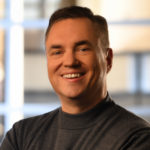
Talk Title: Artificial Intelligence and Machine Learning for the era of Hyperconnected IoT Devices
Abstract: We are at the cusp of an Era of Hyperconnectivity and Hyperscale Computing, fueled by billions of devices in the Internet of Things (IoT) and its industrial sibling, the Industrial IoT (IIOT). Ericsson predicts that data traffic through commercial networks will grow to 164 exabytes per month in 2025. Video already accounted for 63% of the traffic of 2019’s 33 exabytes per month and will become 76% of the estimated 164 exabytes per month in 2025. 5G adoption could reach 2.8 billion subscriptions at that time, and 5G population coverage is forecast at 55%. Seagate and IDC predict that storage in the “global datasphere” will grow to 175 zettabytes by 2025, up from 45 zettabytes in 2019.
This presentation will discuss requirements for designing systems on chips (SoCs) and systems enabling the era of Hyperconnectivity. Specifically, we will and introduce solutions that the Electronic Design Automation (EDA) industry provides today for Artificial intelligence (AI) and machine learning (ML), as well as trends to address future challenges. In addition, we will also discuss how AI/ML technologies increase development productivity and optimize EDA design processes. Specifically, we will discuss enabling processor and design IP and high-level synthesis to enable optimized circuitry for AI/ML algorithms. Furthermore, we will introduce the requirements for optimized AI/ML designs and specific verification tools for this design category. Advanced node and low power implementation are vital to linking verification to SoC implementation, and we will discuss particular optimizations and 3DIC and Chiplet based integration and analysis. We will use AI/ML for EDA to introduce trends and experiences using AI/ML for formal verification, simulation, and implementation.
Biography: Frank Schirrmeister is senior group director, solutions & ecosystem at Cadence. He leads a team translating customer challenges in the hyperscale, communications, consumer, automotive, aerospace/defense, industrial, and healthcare vertical domains into specific requirements and solutions. In addition, his team focuses on cross-product technical solutions such as 5G, artificial intelligence, machine learning, safety, security, digital twins, and partner collaborations. Frank holds a Dipl.-Ing. in electrical engineering from the Technical University of Berlin, Germany. Before joining Cadence, Frank held senior engineering and product management positions in embedded software, semiconductor, and system development, both in Europe and the United States.
___________________________________
Naoki Shinohara, Kyoto University, Kyoto, Japan
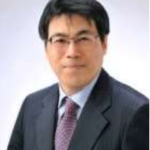
Talk Title: Roadmap to a New World with Electricity Like Air
Abstract: In Japan, we are making a roadmap for R&D of far-field wireless power transfer (WPT) from a wide beam and weak power WPT to a narrow beam and high power WPT with the Japanese government, industries, and academics. In 2021 in Japan, we published a new radio regulation for wide beam WPT in a room. Now we are discussing the next step towards regulations on outdoor wide beam WPT and the narrow beam WPT. In parallel, there is a national project towards enabling Solar Based Space Power (SBSP), a more extensive WPT application in Japan. In my talk, I introduce the recent Japanese activities to make new radio regulations of the WPT and introduce a hopeful roadmap to a new world with electricity like air, created by WPT technology.
Biography: Naoki Shinohara received the B.E. degree in electronic engineering, the M.E. and Ph.D (Eng.) degrees in electrical engineering from Kyoto University, Japan, in 1991, 1993, and 1996, respectively. He was a research associate at Kyoto University in 1996. From 2010, he has been a professor at Kyoto University. He has been engaged in research on Solar Power Station/Satellite and Microwave Power Transmission systems. He was IEEE MTT-S Distinguish Microwave Lecturer (2016-18) and is IEEE MTT-S Technical Committee 25 (Wireless Power Transfer and Conversion) former chair, IEEE MTT-S Kansai Chapter TPC member, IEEE Wireless Power Transfer Conference founder and ExCom committee member, URSI commission D chair, international journal of Wireless Power Transfer (Hindawi) executive editor, the first chair and technical committee member on IEICE Wireless Power Transfer, Japan Society of Electromagnetic Wave Energy Applications adviser and former chair, Space Solar Power Systems Society vice chair, Wireless Power Transfer Consortium for Practical Applications (WiPoT) chair, and Wireless Power Management Consortium (WPMc) chair. His books are “Wireless Power Transfer via Radiowaves” (ISTE Ltd. and John Wiley & Sons, Inc., “Recent Wireless Power Transfer Technologies Via Radio Waves (ed.)” (River Publishers), and “Wireless Power Transfer: Theory, Technology, and Applications (ed.)” (IET), and some Japanese text books of WPT.
___________________________________
Hao Wang, Postdoctoral Scholar, University of California at Davis, Davis CA USA
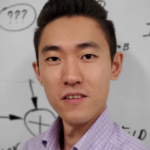
Talk Title: Integrated Millimeter-Wave Frequency Synthesizer based on Low-Power and Low-Noise Sub-Sampling Phase-Locked Loop
Abstract: Millimeter-Wave (mmWave) band signals at 30~300GHz show attractive features in IoT applications. Besides the hot topics of ultra-high-speed 5G/6G communications, mmWave radars with ultra-high range resolutions due to the short wavelength are suitable for human biomedical sign detection and object vibration and displacement sensing. The unique physical characters of mmWave signals interacting with dielectric materials enable the applications in hazardous gases sensing and in measuring chemical volume density such as plant water content. However, with stringent power budget of portable devices and the power-hungry attribute of mmWave circuits, low-power and low-noise on-chip mmWave signal generation is a challenging topic.
In this talk, two techniques for mmWave sub-sampling phase-locked-loop (SSPLL) are proposed to achieve low power consumption while maintaining the low-noise performance. Dividerless frequency acquisition based on proposed sub-sampling lock detector provides robust frequency locking without using power-hungry frequency dividers. Charge pump current mismatch compensation structure significantly increases efficiency in oscillator bank usage, and hence reduces energy loss. The prototype mmWave synthesizers with the proposed techniques achieve sub-10mW power consumption with low phase noise and good FOM.
Biography: Hao Wang is a postdoctoral scholar with the University of California at Davis, investigating low-power-consumption and high-performance mmWave/THz integrated system design. He received the B.S. degree from Harbin Institute of Technology, Harbin, China, in 2011, the M.S. degree from Columbia University, New York, NY, USA, in 2013, and the PhD degree from the University of California at Davis, Davis, CA, USA, in 2021, all in electrical engineering. From 2013 to 2015, he was with Silicon Laboratories, Nashua, NH, USA, designing low-jitter PLL-based clock products. From 2015 to 2016, he was the Director of Engineering and the Chief IC Designer of FunfulTech, Beijing, China, developing IoT-focused CMOS & MEMS IC products. Dr. Wang serves as a Technical Reviewer for multiple IEEE journals including JSSC, TMTT and TCAS-I/II. He also serves as an Affiliate Member of IEEE MTT-S Technical Committee.
___________________________________
Y.-P. Eric Wang, Ericsson Research, Santa Clara, California USA
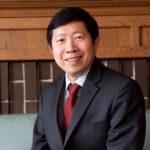
Talk Title: Cellular Internet of Things for Industrial Automation, Wearables, and Smart Cities
Abstract: The main drivers for further cellular technology evolution have always been higher capacity, better coverage, and higher data rates. These drivers have also propelled continued expansion and densification in all the operator networks across the world. In the transition from 4G to 5G, there came a new driving force, which aims to leverage the mightily capable cellular networks to address a full array of new use cases, generally referred to as the Internet of Things (IoT) use cases. These IoT new use cases have a set of new requirements such as device battery life, coverage extension, low device complexity or cost, low or deterministic latency, etc. Although not all these requirements need to be met for one specific use case, the vision has been that the same network can be configured to meet the requirements of different IoT use cases while still excelling in all the key performance indicators (KPIs) for the established use cases such as voice and mobile broadband. This talk provides an overview of Cellular IoT technologies and how they meet the requirement of industrial automation, wearables, and smart cities use cases. It will cover both massive IoT technologies, such as NB-IoT and LTE-MTC, as well as broadband IoT technologies, such as the newly introduced features for connected Reduced Capability (RedCap) New Radio (NR) devices.
Biography: Y.-P. Eric Wang is a Research Leader at Ericsson Research in Santa Clara, CA. He holds a PhD degree in electrical engineering from the University of Michigan, Ann Arbor. In 2001 and 2002, he was a member of the executive committee of the IEEE Vehicular Technology Society and served as the society’s Secretary. Dr. Wang was an Associate Editor of the IEEE Transactions on Vehicular Technology from 2003 to 2007. He has been a technical leader in Ericsson Research in the area of Internet of Things (IoT) connectivity. Dr. Wang was a co-recipient of Ericsson’s Inventors of the Year award in 2006. He has contributed to more than 200 US patents and more than 50 IEEE articles and is a co-author of the book “Cellular Internet of Things: From Massive Deployments to Critical 5G Applications”.
___________________________________
Frank Zeppenfeldt, ESA Satellite Communications, the Netherlands

Talk Title: Tiny sensors talking to geostationary satellites
Abstract: Over the past years, ESA has been supporting many satellite IoT initiatives. Satellites allow to connect IoT nodes with global coverage. Satellites allow to connect devices that have very limited or no access to terrestrial networks. While there are currently a number of commercial initiatives to connect IoT nodes via low earth orbit (LEO) networks, there are also a number of developments that will improve connecting small IoT nodes to geostationary satellites (GEO).
Communicating via GEO satellites offers the distinct advantage that the satellite is always visible, as such allowing real-time IoT services. LEO satellite constellations do not always provide services with such a low latency. A disadvantage is of course the larger distance to the satellite, and consequently a more challenging link budget. ESA has supported in last months a number of tests to demonstrate new methods to communicate with low data-rate IoT nodes over existing GEO satellites. The outcomes of these tests will be discussed and a few directions for future research and development suggested.
Biography: Frank Zeppenfeldt has been studying Pattern Recognition at the Delft Technical University in the Netherlands. He has worked in various positions in aerospace and telecommunications companies. At EUMETSAT he has been responsible for ground segment communications implementation for some meteorological satellites. He now works in the satellite communications group of the European Space Agency (ESA), specifically looking into future projects. Frank has been initiating a number of activities in the area of IoT/M2M and 5G via satellite.



